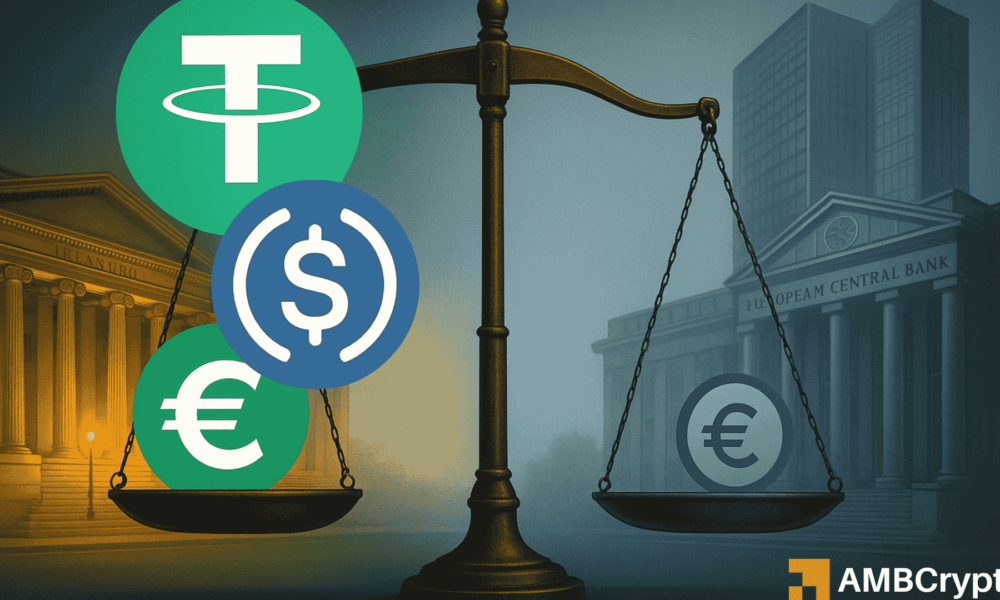Understanding Europe’s Stablecoin Market: A Competitive Analysis
The European stablecoin market has faced significant challenges in establishing its presence in the global crypto economy. Currently valued at just €395 million, euro-denominated stablecoins fall drastically short when compared to their USD counterparts, which dominate the landscape with a commanding 90% share of the global market. This disparity not only highlights Europe’s lag in the digital asset sector but also raises crucial questions regarding its financial future. As the European Central Bank (ECB) notes, the limited market value of euro stablecoins represents a pressing issue that could hinder Europe’s ability to compete effectively in the evolving world of digital finance.
The dominance of USD stablecoins, such as USDT and USDC, underscores a structural imbalance that has significant implications for trading infrastructure within Europe. With stablecoins serving as a foundation for centralized exchanges—where dollar-backed assets account for nearly 80% of all trading pairs—European traders find themselves integrated into a USD-centric digital ecosystem. As a result, the euro plays a minimal role in the crypto market infrastructure, limiting the options available for European liquidity pools, decentralized finance (DeFi) participants, and traditional institutions that otherwise might prefer euro-pegged assets.
A critical factor contributing to the strength of USD stablecoins is their growing relationship with traditional financial markets. According to recent data, the largest stablecoin issuers have become some of the top holders of U.S. Treasury bills, positioning them favorably within the global financial system. This relationship underscores how USD stablecoins are evolving into significant financial instruments. In contrast, euro stablecoins remain static and unable to make meaningful contributions to the financial ecosystem, exposing them to vulnerabilities that come with a lack of scale.
At the core of Europe’s struggle is regulatory oversight, particularly with the Markets in Crypto-Assets Regulation (MiCAR). One of the primary constraints of MiCAR is the prohibition on interest payments for stablecoins. This limitation prevents euro-denominated tokens from offering competitive yields, creating a significant disadvantage in attracting users. As U.S. stablecoin issuers are likely to introduce interest-bearing options, the ECB warns that they could siphon deposits from European banks, thus destabilizing local financial systems as users seek more lucrative savings opportunities.
Furthermore, MiCAR’s limitations create potential risks associated with cross-border transactions. The classification of stablecoins as “multi-jurisdictional” means that discrepancies during times of market stress could lead to mismatched redemptions. For instance, reserves allocated in one jurisdiction may not sufficiently cover the demands in another, amplifying the risks of contagion. As global traders increasingly rely on USD-backed assets, the structural vulnerabilities of euro stablecoins further complicate their role in a rapidly evolving financial landscape.
Looking ahead, Europe faces an urgent need to accelerate its efforts in defining the future of digital money. Without robust euro-based stablecoins or an easily adopted digital euro, the continent risks becoming overly dependent on foreign currencies. Currently, the €395 million euro stablecoin market is a mere fraction—less than 0.5%—of the USD stablecoin ecosystem. As the crypto markets continue to mature and integrate with the traditional financial system, this gap poses a significant threat to Europe’s monetary sovereignty and its ability to influence the future of digital finance. Addressing these challenges will not only require regulatory adjustments but also a commitment to fostering innovation within the European financial ecosystem.


